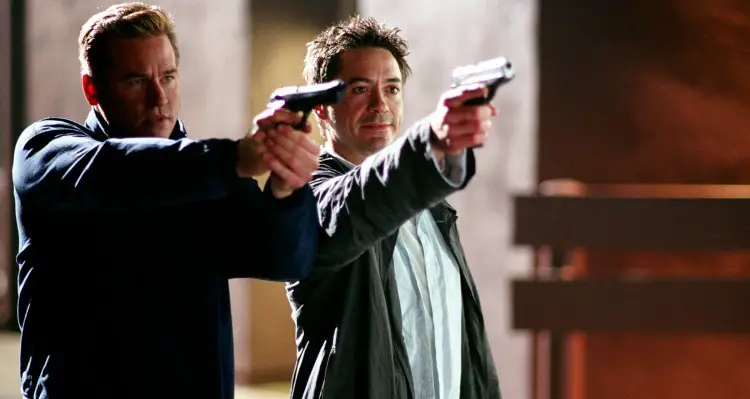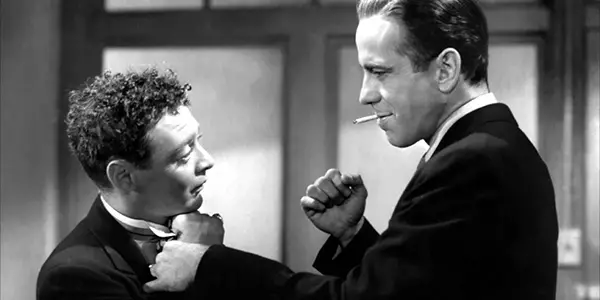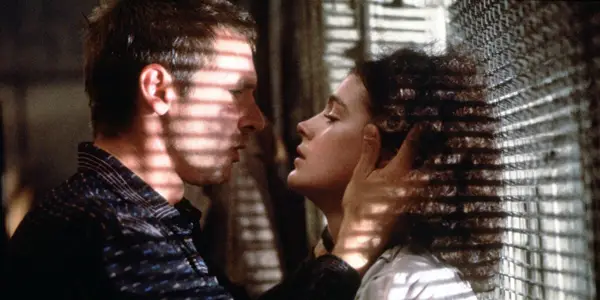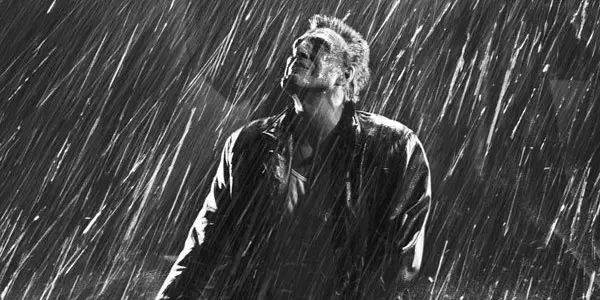Why Film Noir Should Come Back With a Kiss Kiss Bang Bang

Jax is a filmmaker and producer, and a film &…
Film Noir stems back to the earlier days of Hollywood, starting with the Humphrey Bogart classic The Maltese Falcon in 1941. This film, the first from cinema great John Huston, established many of the trademarks we associate with the sub-genre today. The term Film Noir literally means “black film” and refers to how dark and shadowy the films tend to be. The 1940s in particular saw a boom of Film Noir films with The Maltese Falcon, Casablanca, The Third Man, The Big Sleep, Laura and many, many more (there’s a relatively comprehensive list available here).

During the 50s, the fad for noir started to fizzle out. Noir became a sub-genre of drama and action and as such only pops up now and again. When it does show up, though, it tends to make a splash both with the critics and the box office; so why aren’t we seeing more of it?
What Might the Problems Be?
Like any genre film in which a large focus is placed on nods to previous films and associated style, it doesn’t necessarily work unless the viewer has an established relationship with that style. Blade Runner makes a nice exception because it functions as a multi-genre film being both sci-fi and film noir and is often used as a stepping stone for younger generations to older film noir movies (or it was in a couple of my film schools). Blade Runner did an excellent job blending the tools provided from film noir to make a unique neo-noir experience, despite controversy from purists over the different versions.
However, Blade Runner doesn’t depend on a film noir audience in the same way a film such as Dark City does. Now, I’m a huge fan of Dark City, but there is a reason it has remained a cult classic. A lot of my less cinematically inclined friends felt a bit lost with some of the references in Dark City. While the plot holds together without the noir aspect, the entire tone and character of the film is defined and steeped in film noir culture. This is going to isolate some of your viewers and “isolate” isn’t a word studio executives like to hear.

There’s also the danger of cheesiness. This is a potential flaw in any genre film. The filmmakers become so focused on trying to tribute something that they end up making pretty crap movie without any real substance of its own. For example, Romeo is Bleeding contains great actors (Gary Oldman and Roy Scheider) and a halfway interesting plot (nothing original, but what is these days?) but it loses itself in trying to BE a noir film. The Femme Fatale is completely obvious and the plot reuses old devices and lacks surprise or suspense.
This is a pitfall of many modern noir films – they get so caught up with a reverence for the genre they place trademarking above plot points. I truly believe you can make a movie with a tin can if you have a compelling story to tell but it is so easy to forget that, especially if you’re trying to hold a candle up to something that you love. Some filmmakers seem to manage to make it work though.
The Successes of Neo-Noir
Successful Neo-Noir is far from unheard of – just look at Chinatown and the aforementioned Blade Runner. When it’s pulled off, audiences literally flock to see these films. There are plenty of shining examples over the decades since the relative decline of film noir (Chinatown, Blade Runner, Dead Again, Brick, Sin City, Kiss Kiss Bang Bang, The Man Who Wasn’t There). Why should we keep making these films, especially now? Well, personally, I think because we’ve finally gotten to a place where filmmakers are having real fun with the genre. Let’s look at two films, Sin City and Kiss Kiss Bang Bang.

The source material for Sin City is Frank Miller’s graphic novel series of the same name, which pre-dates the film by almost 15 years. But focusing on it from solely a cinematic point of view, Robert Rodriguez and Frank Miller worked together and provided audiences with a film that was fresh, modern, disgustingly violent, visually stunning, and utterly saturated in film noir sensibilities. I was a teenager when it came out and the film totally struck me because I’d never seen anything like it. It was my film noir gateway drug, because, cleverly, the way Rodriguez/Miller utilized the black and white contrast, shadows, and shocks of color is directly pulled out of noir tradition. The characters are classic noir characters on steroids and the plot of ‘rough around the edges person VS. the corrupt establishment’ is a noir classic as well.
Kiss Kiss Bang Bang came out the same year (2005) and despite being more of a tribute to the literary sources behind some of the first great noir films, still pulled off very classic noir techniques (voice over, femme fatale, classic detective mode). However, writer/director Shane Black skillfully weaves in a hefty amount of comedy and Robert Downey, Jr. and Val Kilmer throw their chemistry into the mix and you forget that Kiss Kiss Bang Bang is a genre film. You’re just along, enjoying the ride, like you would any good movie. The movie still throws in some very dark curve balls, and handles them with the seriousness and respect they both deserve and require, but it provides a breath of fresh air to the genre and proves that Film Noir is still viable as a revitalized genre for entertainment.
Noir traditionally deals with darker characters as well as darker sets, and this glimpse into the shadowy areas of our own souls from the comfort of a cinema may have something to do with noir’s popularity. Hollywood may be obsessed with showing us happy endings, but every once in a while we need to be told, “That’s Chinatown” because sometimes that’s the hand we get dealt ourselves. One purpose of art is to hold a mirror up to existence, not just the bright, fun stuff, but also the dark, frightening side of humanity. Film Noir does that for us. So I think it should stick around and we should see a bit more of it.
Do you think Film Noir is old news? What are some of your favorite examples from the genre? Tell me in the comments!
(top image source: Kiss Kiss Bang Bang – Warner Bros.)
Does content like this matter to you?
Become a Member and support film journalism. Unlock access to all of Film Inquiry`s great articles. Join a community of like-minded readers who are passionate about cinema - get access to our private members Network, give back to independent filmmakers, and more.
Jax is a filmmaker and producer, and a film & tv production lecturer at the University of Bradford and is also completing a PhD about Stan Brakhage at the University of East Anglia. In the remaining "spare time", Jax organises the Drunken Film Fest, binges bad TV, and dreams of getting “Bake Off good” with their baking.












